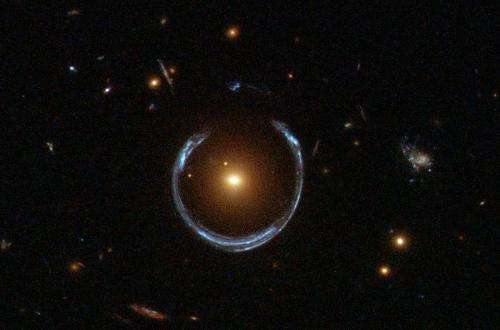Distorting the lens

(PhysOrg.com) -- One of the most bizarre predictions of Einstein's Theory of General Relativity is the existence of back holes, objects that are so dense that not even light can escape from their gravitational grasp. A related prediction of General Relativity is that the path light travels can be bent by the presence of mass, so that matter can sometimes act like a lens - a so called "gravitational lens" - and produce distortions in images of background objects seen behind it. During the now famous total eclipse of 29 May 1919, scientists confirmed these basic predictions of Einstein's theory by observing starlight bent by the gravity of the Sun.
Astronomers since then have seen many cosmological examples of gravitational lensing, as light from a distant galaxy is magnified and distorted as it passes through a closer galaxy (or a cluster) en route to Earth. CfA astronomers Avi Loeb and Rosanne Di Stefano, with three colleagues, have now calculated the effect when the gravitation lens (the galaxy) also contains a supermassive black hole. Since most if not all galaxies host supermassive black holes, the added complexity of the image could be common.
The scientists conclude that a central supermassive black hole can indeed distort the image of a more distant galaxy by introducing new knots in the image. These new features are usually very faint, however, and will probably be undetectable with current instruments. However, the team notes that new facilities, especially at radio wavelengths, should be able to detect them, and when interpreting the distorted shape of a gravitationally imaged galaxy, the implications of a central supermassive black hole needs to be be taken into account.
Provided by Harvard-Smithsonian Center for Astrophysics





















